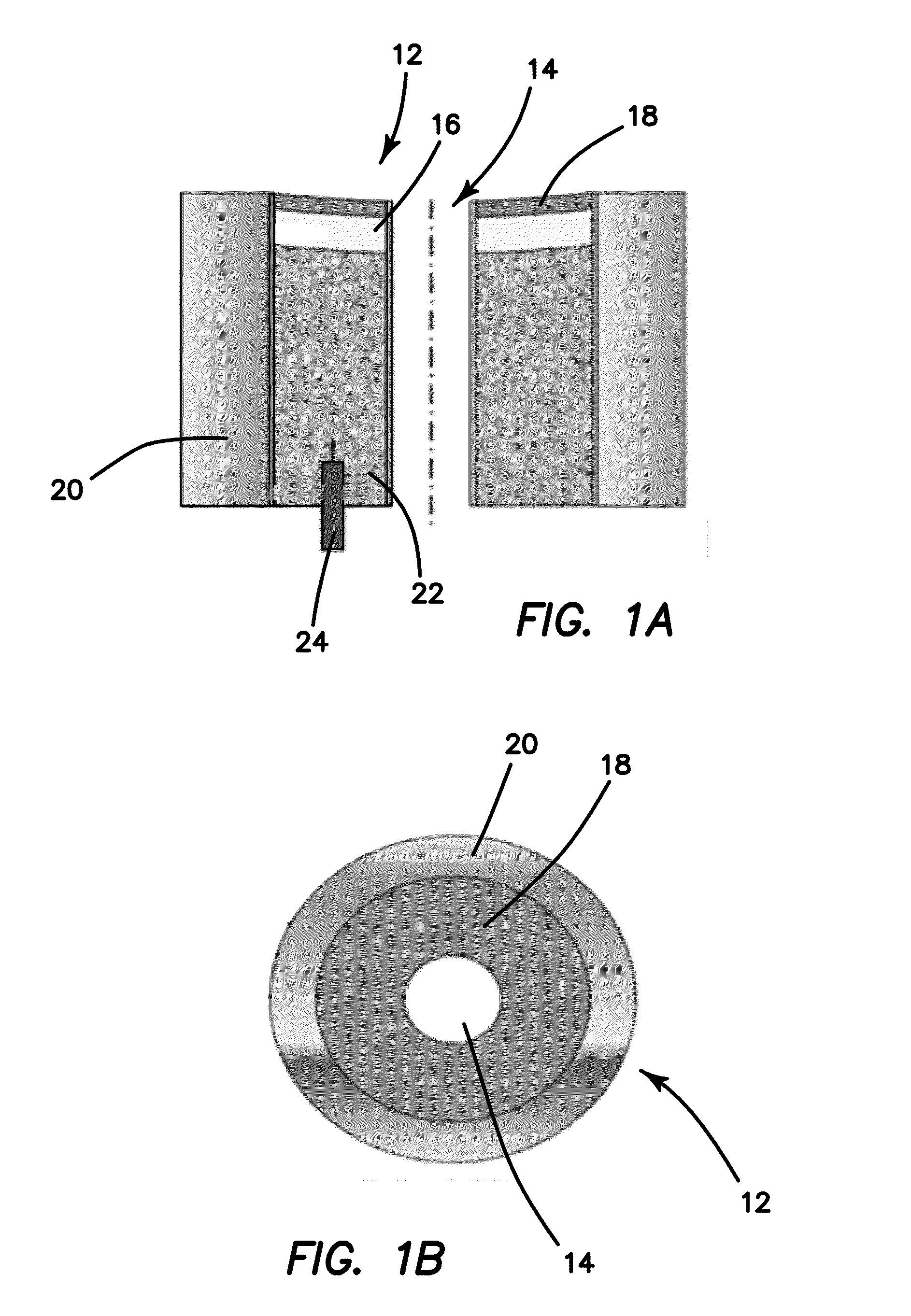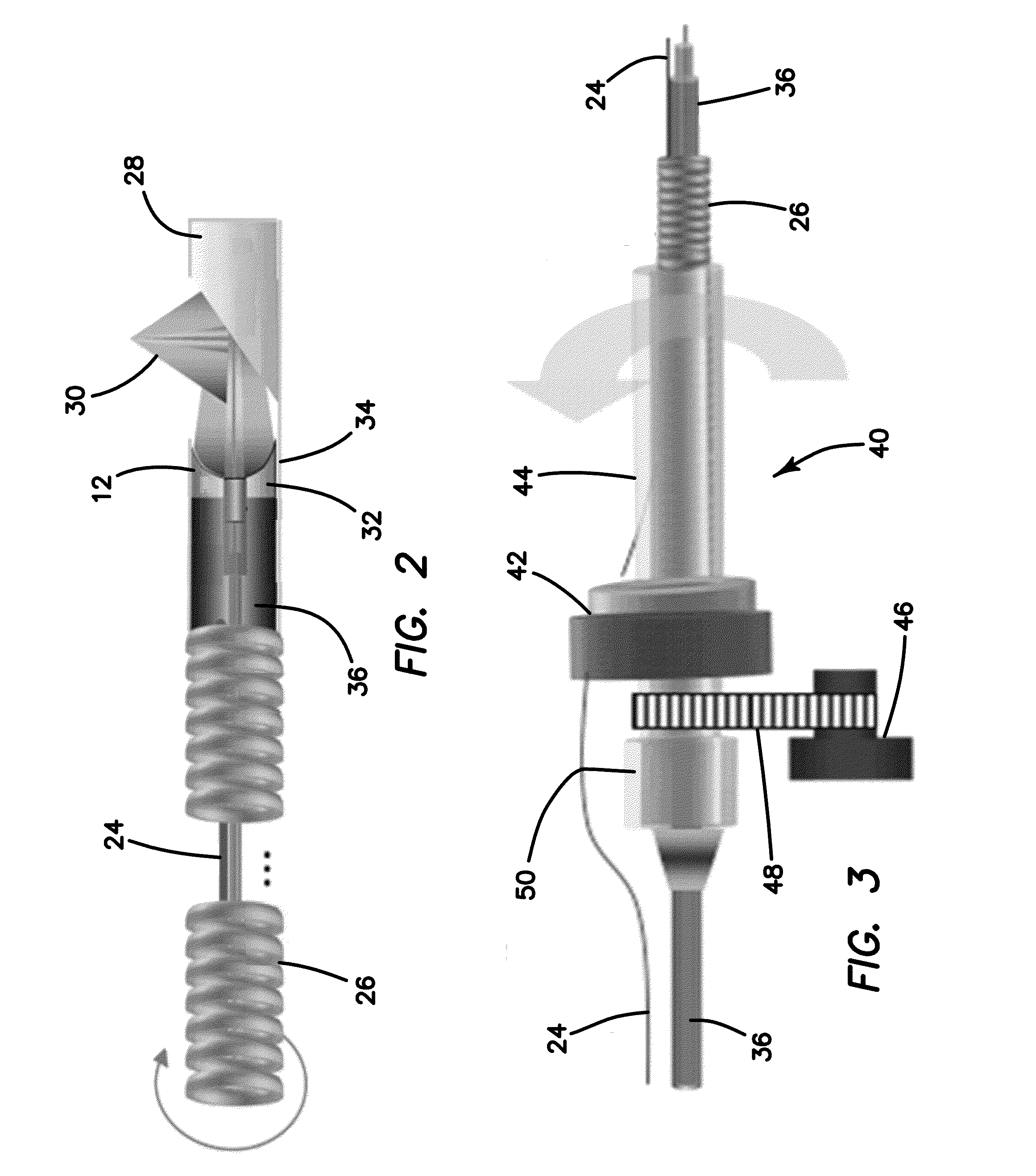Integrated Multimodality Intravascular Imaging System that Combines Optical Coherence Tomography, Ultrasound Imaging, and Acoustic Radiation Force Optical Coherence Elastography
a multi-modality, intravascular imaging technology, applied in the field of multi-modality intravascular imaging systems, multi-modality endoscopic imaging systems, optical coherence elastography, acoustic radiation force systems, can solve the problems of increasing survival rate, reducing treatment, and current diagnostic techniques, including digital rectal exams and blood prostate-specific antigen (psa) measurement, can achieve improved prognosis, reduce costs for hospitals and patients, and improve sensitivity in displacement measuremen
- Summary
- Abstract
- Description
- Claims
- Application Information
AI Technical Summary
Benefits of technology
Problems solved by technology
Method used
Image
Examples
Embodiment Construction
[0064]We have developed a PR-ARF-OCE system 10 that uses an acoustic wave generated acoustic radiation force to apply pressure to the tissue and uses phase-resolved OCT to evaluate the elastic properties of vascular tissue. The ARF-OCE combines the high-speed excitation of ARF with sub-micrometer / nanometer detection sensitivity of phase resolved OCT. This elastography technique allows high-speed and high-resolution point-by-point mapping of local strains in atherosclerotic coronary tissue, which provide critical information to assess the vulnerability of plaques. Using a known excitation signal also allows us to sweep different frequencies and measuring the frequency response of tissues in order to detect the differences between normal and diseased tissue with altered elasticity by sensing resonance frequencies between tissues. Since the mechanical properties of fibrous and fatty plaques are different, PR-ARF-OCE also has the potential to differentiate between various plaque compone...
PUM
 Login to View More
Login to View More Abstract
Description
Claims
Application Information
 Login to View More
Login to View More - R&D
- Intellectual Property
- Life Sciences
- Materials
- Tech Scout
- Unparalleled Data Quality
- Higher Quality Content
- 60% Fewer Hallucinations
Browse by: Latest US Patents, China's latest patents, Technical Efficacy Thesaurus, Application Domain, Technology Topic, Popular Technical Reports.
© 2025 PatSnap. All rights reserved.Legal|Privacy policy|Modern Slavery Act Transparency Statement|Sitemap|About US| Contact US: help@patsnap.com



